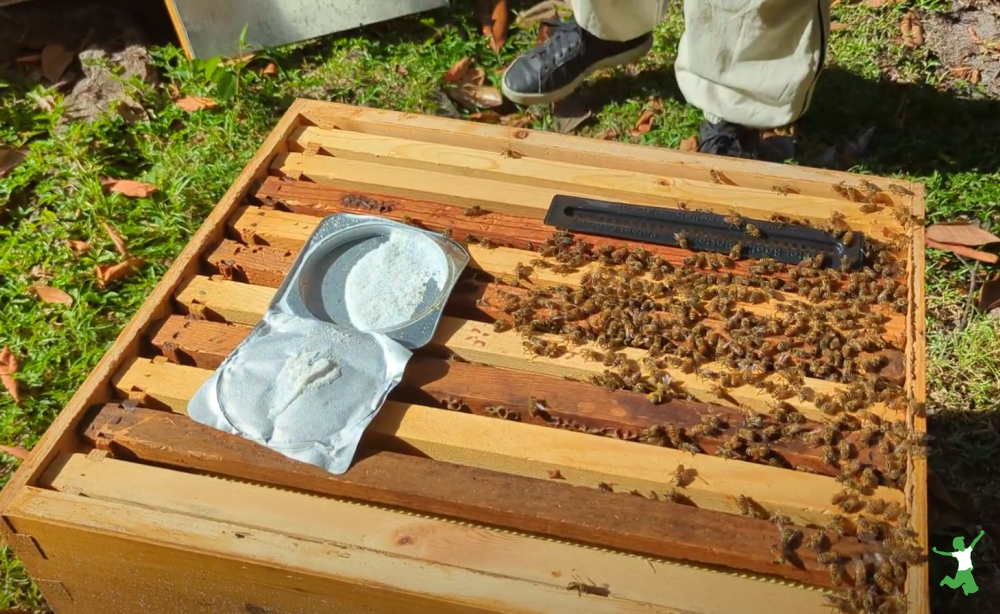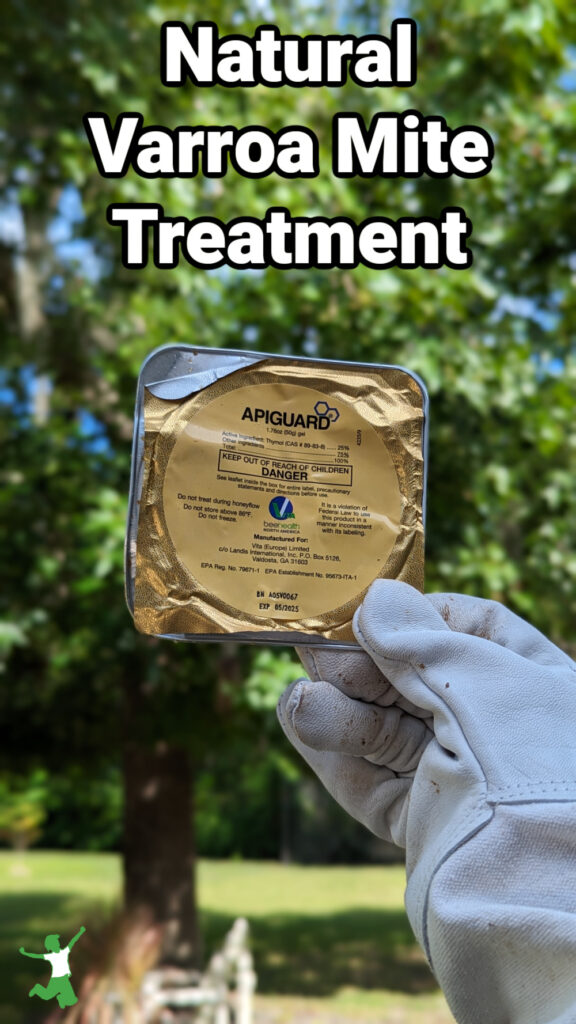How to eliminate a varroa mite infestation naturally while preserving the safety of the bees and integrity of the colony.

As a new beekeeper, I was horrified to recently learn of an inflexible government policy in Australia that is mandating the burning of beehives with gasoline for potential varroa mite infestations.
This is the case even if the beehives show no evidence of an outbreak.
“Fight the mite” is the government’s catchy rallying cry. What actually seems to be happening, however, is a purposeful attack on a key aspect of Australia’s food production.
Varroa mite outbreak in beehives is certainly a big problem. However, infestations can be easily controlled without destruction of the hive itself. More on how to do this below.
Despite the ability to naturally control varroa, government officials in Australia are taking the path of least resistance…burn it all down.
The heartbreaking video below posted by VastHarvestPermaculture is despicable as well as deranged.
With literally no physical evidence, hundreds of beehives are being burned with gasoline by the government.
This is the case even when beekeepers are able to prove they are not infested with varroa.
Why this is being done to such a key part of the food chain is mystifying.
One has to consider the possibility that damage to the food supply is actually the goal. Is varroa simply the excuse to deal a deadly blow to the domestic honey bee industry?
VastHarvestPermaculture has many more videos of this travesty unfolding in Australia.
How to Treat Varroa Mite Naturally
As a new beekeeper, it was extremely important that I know how to deal with varroa.
My instructor from Gem Apiaries introduced me to a nontoxic approach to treat and eliminate varroa mites without harm to the bees or the hive.
This product is called Apiguard and only costs about $10 for a single treatment per hive.
The active ingredient in Apiguard is thymol, a phenol in thyme oil. It is nontoxic and suitable for use in organic agriculture.
Once extracted from thyme oil, thymol presents as a white crystalline substance with a pleasant aromatic odor and powerful antiseptic properties.
Apiguard combines thymol blended into a slow-release gel that very effectively controls varroa mites in honeybee colonies.
The premade Apiguard trays are easiest to use for backyard beekeepers.
Simply peel back the lid of one tray and place on top of the brood frames gel side up as shown in the picture at the top of the article.
Leave sufficient enough space at the top for the bees to get into the tray.
Close the hive and leave the tray in place for 2 weeks.
Repeat with a second tray and leave in place for 2-4 weeks.
The great news is that beekeepers can apply Apiguard at any time of day or season.
However, beekeepers can obtain the best results by treating colonies in the late afternoon or evening when the temperature is lower and the bees are inside or returning to the hive.
In summary, controlling varroa is a straightforward process that does not need to bring any harm to the bees, the queen or the colony itself.









Sarah, you really should look into treatment-free bee keeping, way more sustainable for the bee colony and safer honey in the end. I honestly don’t know how they can label honey “organic” after all those toxic treatments and sugar feedings. Just not necessary, especially for the home beehive. (The bees will take care of the varroa mites as long as their immune system is not compromised with toxic treatments.) Local bees (from a caught swarm) will be stronger and take care of all the mites just as they do in the wild trunks of dead trees. Look into Russian and European horizontal frames — using the Layens frame system. Particularly Leo Sharashkin (in the Ozarks). Many Langstroth bee keepers have switched over to Layens hives, healthier bees and also easier on the back since not lifting heavy boxes with comb and honey!
Yes, I am now practicing treatment free beekeeping. It took me a couple of years to do what “conventional” beekeepers said to do (obviously I didn’t do the GMO sugar water, but other recommendations were not as clear cut, so I needed to find out via experience).
A friend in the community who is also a beekeeper helped me along with this!
Wow, Sarah, thanks for this – I had no idea (not that I, personally, keep bees – the only bee I have is in my bonnet, and the honey yield from that is not inspiring)!
I’m so excited that you have bees too now and I get to share in all of the natural ways to care for them. I would highly recommend Juliette Levy’s book The Complete Herbal Handbook for Farm and Stable, there is a small section on caring for bees in there but we also use her natural rearing diets and anti parasitic protocols for all of our animals.
Wow, that sounds like a must-have for the home library. Thank you!
This surprises me. I recommend looking into treatment-free beekeeping.